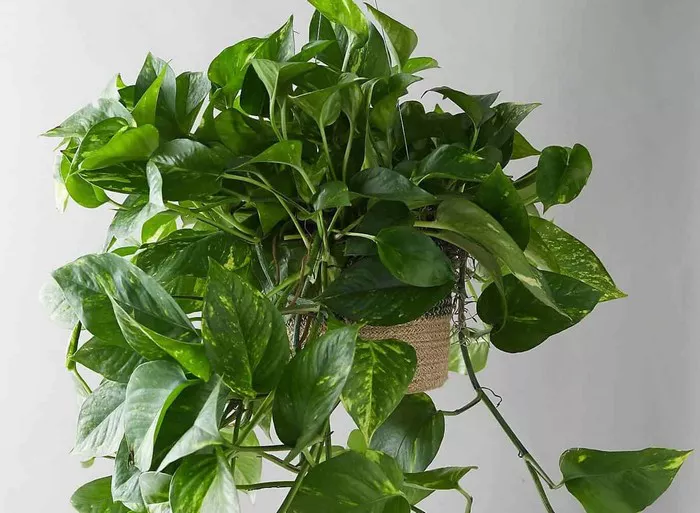Pothos plants, known for their lush foliage and ease of care, have become a staple in both indoor and outdoor gardens around the world. With their ability to thrive in various conditions and their aesthetic appeal, it’s no wonder that pothos plants are beloved by gardeners of all skill levels. However, what many may not realize is that there is a remarkable diversity within the pothos genus. In this article, we will delve into the fascinating world of pothos plants, exploring their different types, characteristics, and how to care for them.
Understanding the Pothos Genus
Before we dive into the different types of pothos plants, it’s essential to understand the genus they belong to. Pothos, scientifically known as Epipremnum aureum, is a member of the Araceae family, which also includes popular houseplants like philodendrons and peace lilies. Native to the tropical regions of Southeast Asia, pothos plants are renowned for their versatility and ability to thrive in low-light conditions.
Common Varieties of Pothos
While there are countless cultivars and hybrids of pothos plants, several varieties are commonly found in both nurseries and households:
1. Golden Pothos (Epipremnum aureum): Perhaps the most well-known variety, golden pothos features heart-shaped leaves with variegated patterns of green and yellow. It is prized for its air-purifying qualities and is often used in indoor spaces to improve air quality.
2. Marble Queen Pothos (Epipremnum aureum ‘Marble Queen’): This variety boasts leaves that are predominantly white with splashes of green, resembling marble patterns. Marble queen pothos adds a touch of elegance to any space and thrives in indirect sunlight.
3. Neon Pothos (Epipremnum aureum ‘Neon’): As the name suggests, neon pothos stands out with its vibrant, fluorescent green leaves. This variety prefers brighter light conditions compared to other pothos plants and can add a pop of color to any room.
4. Jade Pothos (Epipremnum aureum ‘Jade’): Characterized by its deep green foliage, jade pothos is a hardy and resilient variety that is well-suited for beginners. It is tolerant of low-light conditions and requires minimal maintenance.
5. Pearls and Jade Pothos (Epipremnum aureum ‘Pearls and Jade’): This cultivar features leaves with creamy-white variegation and hints of green, resembling pearls on a vine. Pearls and jade pothos is prized for its unique foliage and is often used in hanging baskets or as a trailing plant.
Rare and Unusual Pothos Varieties
In addition to the commonly found varieties, there are also rare and unusual pothos cultivars that are highly sought after by collectors and enthusiasts:
1. Manjula Pothos (Epipremnum aureum ‘Manjula’): This striking variety features leaves with creamy-white variegation and splashes of silver and green. Manjula pothos is prized for its unique coloration and is a favorite among collectors.
2. Cebu Blue Pothos (Epipremnum pinnatum ‘Cebu Blue’): Unlike traditional pothos plants, Cebu blue pothos features elongated, waxy leaves with a distinct bluish-green hue. This rare variety is native to the Philippines and requires well-draining soil to thrive.
3. Silver Satin Pothos (Scindapsus pictus ‘Argyraeus’): While not technically a pothos plant, silver satin pothos is often confused with its close relative due to its similar appearance. This variety features heart-shaped leaves with silver variegation and is prized for its trailing habit.
4. N’Joy Pothos (Epipremnum aureum ‘N’Joy’): With its compact growth habit and striking variegation, N’Joy pothos is a visually stunning variety that is sure to catch the eye. It features leaves with creamy-white margins and splashes of green, creating a striking contrast.
Care Tips for Pothos Plants
Regardless of the variety, all pothos plants require similar care to thrive. Here are some essential tips for keeping your pothos happy and healthy:
1. Light: Pothos plants prefer bright, indirect light but can tolerate low-light conditions. Avoid placing them in direct sunlight, as this can cause their leaves to burn.
2. Watering: Allow the top inch of soil to dry out between waterings, then water thoroughly until water drains from the bottom of the pot. Overwatering can lead to root rot, so it’s essential to strike the right balance.
3. Temperature and Humidity: Pothos plants prefer temperatures between 65°F and 85°F and moderate humidity levels. If the air in your home is dry, consider placing a humidifier near your plants or misting them occasionally.
4. Fertilization: Feed your pothos plant with a balanced liquid fertilizer once a month during the growing season (spring and summer). Avoid overfertilizing, as this can lead to nutrient build-up in the soil.
5. Pruning: Regularly prune your pothos plant to encourage bushy growth and remove any yellowing or dead leaves. You can also propagate pothos plants from stem cuttings to grow new plants.
Conclusion
In conclusion, the diversity of pothos plants is truly remarkable, with a wide range of varieties to suit every taste and preference. Whether you prefer the classic golden pothos or are drawn to the rare and unusual cultivars, there is a pothos plant for everyone. By understanding the different types of pothos plants and how to care for them, you can enjoy their beauty and benefits in your home or garden for years to come.

